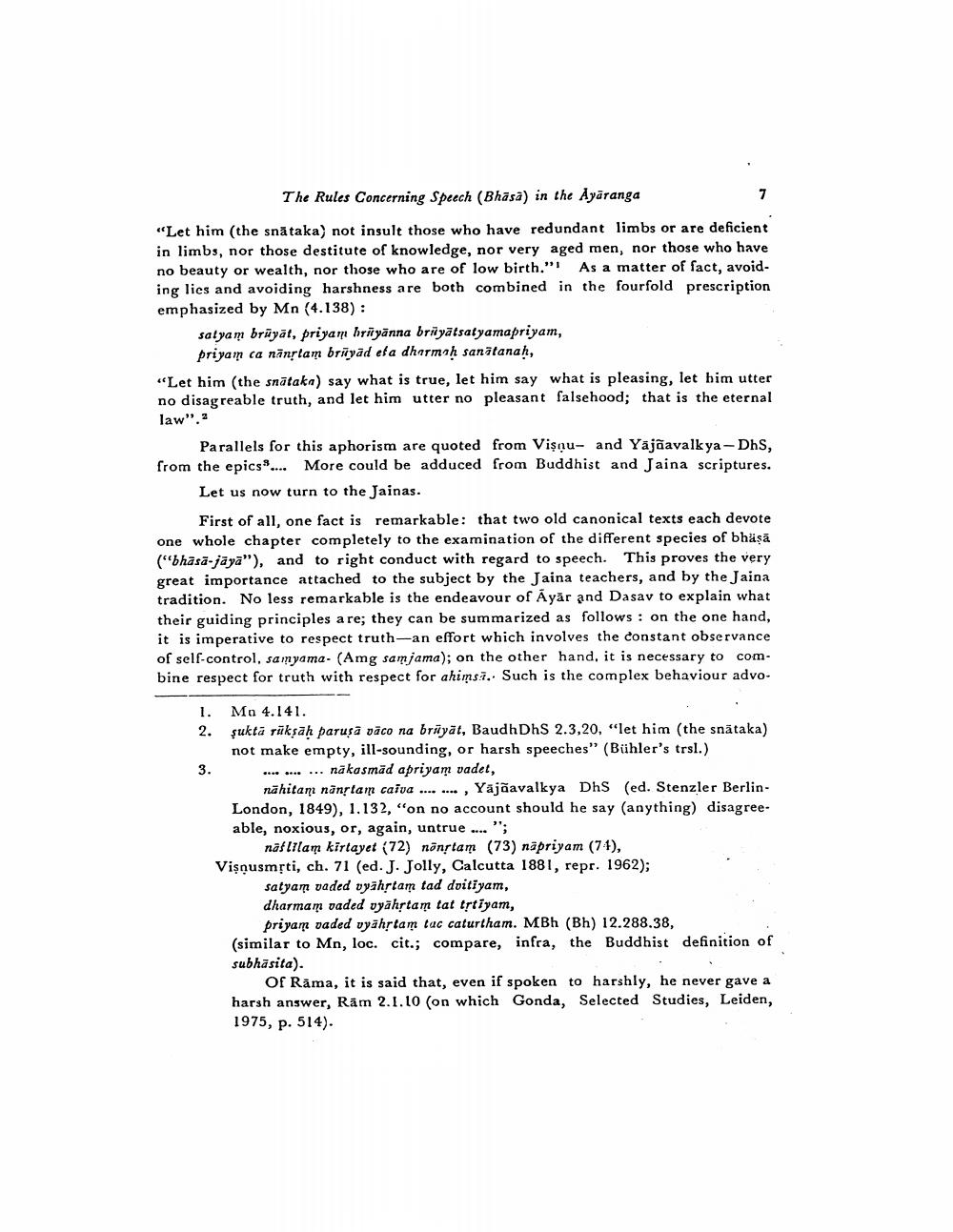________________
7
The Rules Concerning Speech (Bhasa) in the Ayäranga
"Let him (the snataka) not insult those who have redundant limbs or are deficient in limbs, nor those destitute of knowledge, nor very aged men, nor those who have no beauty or wealth, nor those who are of low birth." As a matter of fact, avoiding lies and avoiding harshness are both combined in the fourfold prescription emphasized by Mn (4.138):
satyam bruyāt, priyam hriyanna briyātsatyamapriyam, priyam ca nanṛtam brayad efa dharmaḥ sanatanaḥ, "Let him (the snataka) say what is true, let him say what is pleasing, let him utter no disagreable truth, and let him utter no pleasant falsehood; that is the eternal law"."
Parallels for this aphorism are quoted from Vişnu- and Yājñavalkya-DhS, from the epics.... More could be adduced from Buddhist and Jaina scriptures.
Let us now turn to the Jainas.
First of all, one fact is remarkable: that two old canonical texts each devote one whole chapter completely to the examination of the different species of bhäṣā ("bhäsä-jaya"), and to right conduct with regard to speech. This proves the very great importance attached to the subject by the Jaina teachers, and by the Jaina tradition. No less remarkable is the endeavour of Ayar and Dasav to explain what their guiding principles are; they can be summarized as follows: on the one hand, it is imperative to respect truth-an effort which involves the constant observance of self-control, samyama- (Amg samjama); on the other hand, it is necessary to combine respect for truth with respect for ahimsa. Such is the complex behaviour advo
1. Mn 4.141.
2. şuktā rūkṣaḥ parusa vaco na brüyat, Baudh DhS 2.3,20, "let him (the snataka)
not make empty, ill-sounding, or harsh speeches" (Bühler's trsl.)
3.
... nākasmād apriyam vadet,
nahitam nanṛtam caiva........, Yajnavalkya DhS (ed. Stenzler BerlinLondon, 1849), 1.132, "on no account should he say (anything) disagreeable, noxious, or, again, untrue....";
näflilam kirtayet (72) nonṛtam (73) näpriyam (74), Visnusmrti, ch. 71 (ed. J. Jolly, Calcutta 1881, repr. 1962);
satyam vaded vyähṛtam tad dvitiyam,
dharmam vaded vyahṛtam tat tṛtiyam,
priyam vaded vyahṛtam tac caturtham. MBh (Bh) 12.288.38, (similar to Mn, loc. cit.; compare, infra, the Buddhist definition of subhasita).
Of Rama, it is said that, even if spoken to harshly, he never gave a harsh answer, Ram 2.1.10 (on which Gonda, Selected Studies, Leiden, 1975, p. 514).




